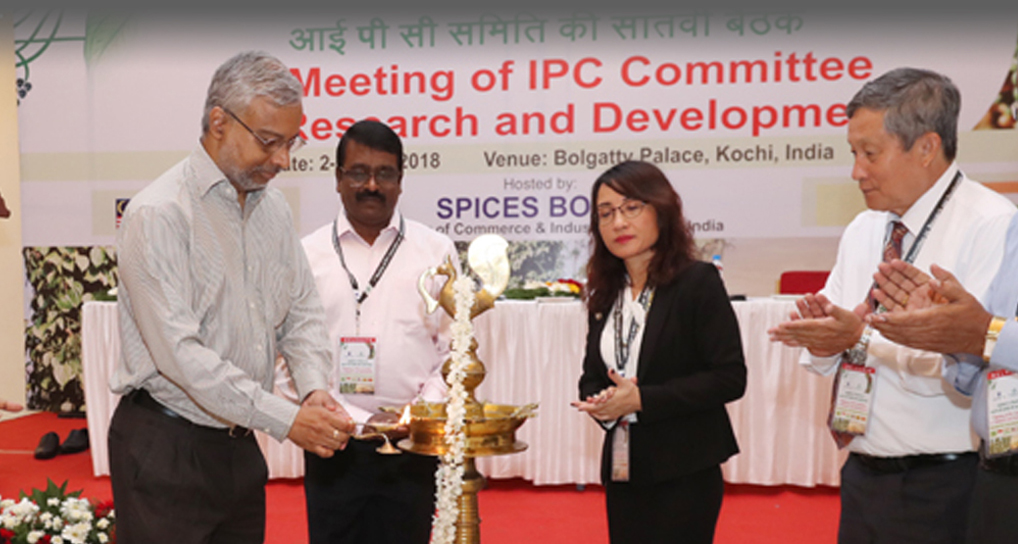
"India is one of the most developed countries in value addition of pepper" said Hoang Thi Lien, Executive Director of International Pepper Community, Jakarta, in an exclusive interview given for Spice India magazine while attending the 7th Meeting of the IPC Committee on Research and Development at Bolghaty Palace, Kochi, India.
According to her, huge investments and latest technologies are necessary for starting value addition industry, which other producing countries lack. Insufficient technological knowledge is what takes them backwards. Value addition in these producing countries ends with mere powdering of pepper which is the raw material for making oils and oleoresins.
The International Pepper Community acts as an information centre for the pepper producing countries and conducts surveys and studies with the help of member countries as well as private parties. Furthermore, should new regulations be implemented by the importing countries, American Spice Trading Association (ASTA) as well as European Spice Association (ESA) would issue guidelines and update this information with the IPC for its members to prepare for it.
Good Agricultural Practices (GAP), Pest and Disease Control, and food safety parameters for the production of quality pepper for sustainability is made available by the member countries on IPC website. As the number of diseases that affect the crop and the types of insects that feast on it are increasing day by day, the use of pesticides is also on the rise. Hence, environmental degradation by the indiscriminate use of pesticides is also one of the concerns of GAP. The IPC has also developed a Farmer's App which helps farmers identify problems in their fields by themselves and also to take corrective actions in the most sustainable way. This will shortly be made freely available to farmers in the member countries.
According to the present scenario, every year all pepper producing countries are producing more than the previous year, hence the supply has increased. However, demand is not growing in proportionate rate. This, according to Ms. Lien, is one of the reasons for fluctuations in the price.
This year, IPC estimates that 510-520 thousands metric tonnes of production with import of consuming countries around 300 thousands metric tonnes and consumption of producing countries around 160 thousands metric tonnes thus total world demand may come nearing 450-460 thousands metric tonnes only. Productivity has also increased in some of the producing countries. Anticipating price hike each year, most of the farmers do not sell their products at the right time, but save them, which increases the stock. However, as an agricultural produce, pepper must not be kept for more than two years.
Ms. Lien observes that among others, Indian farmers get strong support from the government in terms of policies such as minimum import price which has been applied since last December whereas these are just hearsay in other producing countries. Also when the price comes down, Indian pepper farmers turn to investing in other plantation crops like cocoa, areca nut etc., to maintain the earnings from their farms.
According to her observation, market price will now no longer go back to level 10 years back which it had achieved due to the influence of market makers in 2008-2009. New equilibrium will be arrived to reflect real demand and supply and market takes time to reach this. It is not advisable for farmers in IPC countries including India to have high expectations as during previous periods to gain premium as high as early 2010. It is advisable to Indian farmers that even with support from government with application of administrative measures such as MIP to interfere the market, prices will not be easily go up.
As far as pepper consumers are concerned, buyer preference and reasonable price is the base. For example, in Japan, preference is for Malaysian pepper whereas Europe prefers Muntok white pepper. Price is also a factor in purchase. However, the IPC can neither stabilize the market price nor interfere. Fortunately, the IPC can prepare databases and analysis, and update the member countries that a particular quantity will be produced in the coming year which helps the farmers to foresee the trend. Through their mobile Farmer's App, the IPC will try to provide information in the hands of the farmers thereby tempting to bring more stability to the market.
New countries like Cambodia are coming to the forefront in the production of pepper. Area of production is also expanding in every producing country.
In closing her interview, the Executive Director believes that it is necessary for the member countries to transform the plantation and production toward sustainability. It is also the right moment for the industry to put forward investment into the value addition capabilities which helps transform pepper industry in the product application which itself traditionally is regarded as commodity. It is expected that within one or two years, the pepper industry as a whole would regain its glory.
